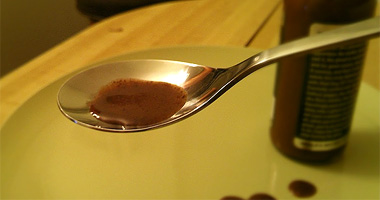Chile Chapters
How to Review a Hot Sauce
 The reviews on this site are broken down into 5 factors; label, looks, smell, taste, and heat. Your overall rating is chosen by you, and not calculated based upon the others. You may not have a ton to say about some of the factors, but lets hear about the rest. If you’re wondering about what else to write, we’ve put together some ideas that may help.
The reviews on this site are broken down into 5 factors; label, looks, smell, taste, and heat. Your overall rating is chosen by you, and not calculated based upon the others. You may not have a ton to say about some of the factors, but lets hear about the rest. If you’re wondering about what else to write, we’ve put together some ideas that may help.
The common way of tasting is to pour directly onto a spoon or a plain chip/tortilla. Some people even have their own special tasting spoons. If you are using it on eggs, chicken, or some other food, you may want to make note of how well it pairs in your review.
Take Notes
You may find that it is incredibly helpful to jot down some brief notes on a piece of paper, while you are tasting. Write down the factors below, along with some phrases or words that you will want to incorporate into your review.
Factors
Label / Bottle
Is it easy to read? Is it funny? Is the artwork fantastic, horribly drawn, professional? What does it make you think of? Does it come with any sort of unique packaging?
Looks
This is the consistency, texture, and color. How does it pour. Is it very thin and gets used up quick? Is it thick, thin? Are there visible chunks / pieces of ingredients in it?
Smell
Not the most important factor, but part of the overall experience. Take off the cap and give it a whiff. What stands out the most? Does it smell appetizing?
Taste
What flavors and hints of ingredients are you tasting? What is the initial taste and after-taste? What is your overall impression. Is it sweet, rich with a lot of flavor, bland, only heat?
Heat
How does this compare to other sauces? How is it when it first touches your tongue and what is the lingering effect afterwards? How much do you need to use on your food; can you slather it on or do you have to use it one drop at a time?
Overall
Give us the full story. What was the situation surrounding this tasting, did you get the sauce anywhere special, what foods did you try it on? Would you use this every day or in special cases? How does it compare to anything else you’ve tried?
Writing Tips
Avoid saying it was just “hot” or “delicious”. It’s important to communicate the details of your experience and what led to the positive or negative reaction you had. Food writing can be challenging because we might not have the exact words to fit our senses of taste/smell.
Here are some bits of food-writing wisdom from around the web that are spot-on:
From “Better Food Writing: Adjectives” - Food Blog Alliance:
“Describing food is an important part of good food writing; avoid words that are overused or vague whenever possible.”
“Another pitfall is to rely too heavily on adjectives”
From Beer Writing Made Easy - Beervana (Replace beer with "hot sauce"):
“Don't write to impress, write to communicate”
“Another element often overlooked is to give some sense of the experience of the beer. Indians have a philosophy of art in which every artistic expression can be categorized by the emotional mood ("rasa") it delivers. This is perhaps an unnecessary idiosyncracy of mine, but I strongly relate to the experience of the [beer], not just its characteristics...”
What’s the Word I’m Looking for...
Can’t find the right descriptive word? Here’s a list of ideas that may help you out and kickstart that creative writing. Finding or making up some big fancy words may help, but is the reader understanding what you’re trying to describe? You could also try an analogy or a comparison instead:
- chewy, chunky, sweet, hints of __, fresh, pungent, warm, fruity, zesty, pulpy, mild, overpowering ___, smokey, lingering ___, smooth, velvety, tangy, bland, flavorless, peppery, bitter, acidic, sour, vinegary, blazing, fiery, spicy, buzz, ___ base, aromatic, thin, thick, grainy, seasoned, overpowering, ___ overtones, intense, mouth-watering, mellow, harsh, lively, gingery/garlicky, full-bodied, distinctive, tangy, palatable, distasteful, flavorsome, heavenly, salty, oily, sticky, __ aftertaste, traces of __, honeyed, piquant, luscious, nectarous, pungent, concentrated
Here are some outside links with more:
Check the Ingredients
You may not identify everything right away off the bat. Checking what’s actually in there may help describing the taste and what stands out. Some common ingredients are:
- vinegar and salt - most have this. Your real basic Tobasco is simply vinegar, peppers, and salt, aged in oak barrels. Some may use an apple-cider vinegar.
- different fruits (mango, kiwi, grapefruit, etc),
- various types of pepper or spices
- tomato, garlic, cilantro
- etc.
